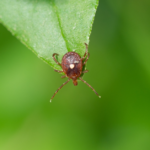How Dangerous is Avian Flu, Officially Known as “Highly pathogenic avian influenza A H5N1 clade 2.3.4.4b genotype B3.13.”?

Dr. Jennifer Nuzzo, a senior fellow for global health at the Council on Foreign Relations (CFR), and Dr. Rick Bright, former CEO of the Pandemic Prevention Institute at the Rockefeller Foundation and director of the Biomedical Advanced Research and Development Authority (BARDA) recently discussed the growing risk of avian influenza spreading in North America among poultry, dairy cows – and a small number of farm workers in direct contact with infected animals.
Dr. Nuzzo reminds us that this disease, called Highly Pathogenic Avian Influenza (HPAI) influenza virus H5N1, is a closely related strain of the H1N1 influenza A virus that infected an estimated 500 million people worldwide during the Spanish Flu pandemic of 1918-1920 – resulting in an estimated 17 to 50 million people dying from the virus.
Recent History of H5N1
Today’s H5N1 virus (and its related H7 and H9 variants) was first identified back in the 1990s, initially detected among geese. In 1997, it crossed over the species barrier to infect about 18 humans in Hong Kong, killing 6. Public health officials successfully contained this outbreak by conducting a mass bird cull at chicken farms and closing live markets.
However, the virus continued to spread under the radar, circulating among wild birds and later domesticated ducks. Humans once again became infected with H5N1 starting in 2003 and continuing until today. In this period, about 900 human cases have been detected, with an alarmingly high mortality rate of 60%. In Dr. Nuzzo’s view, this very high mortality rate makes H5N1 a potentially much deadlier virus than Covid 19.

Are We Adequately Prepared this Time to Respond to a Deadly Avian Flu Outbreak? Are We One Mutation Away from Disaster?
Dr. Bright expressed his concern about the way that the H5N1 virus continues to spread around the world, often in regions where it was not expected.
Contributing to this proliferation is the way the virus is establishing a viral reservoir in a growing number of species, spreading beyond chickens and ducks to now infect wild birds and other species of mammals, including cattle, goats, cats, coyotes, pumas, leopards, foxes, opossums, squirrels, skunks, raccoons, bears, and seals.
The transmission of H5N1 to cattle, confirmed at a Texas dairy farm in March 2024, was both unwelcome and unexpected – Bright said that until now influenza A infections have not been reported in cows.
Dr. Bright warns us that the transmission to mammalian species, such as dairy cattle, brings the threat of an H5N1 flu virus one step closer to widespread human infection.
Unfortunately, in the past couple of months, we have seen a small number of cases in North America where the H5N1 virus has jumped from dairy cows to infect dairy workers. Fortunately, these workers recovered without hospitalization, with their primary symptom being eye inflammation. Importantly, the virus was not detected in their respiratory systems.
However, Dr. Bright is concerned about further anecdotal reports of infections among additional farm workers. Also concerning is the recent detection of genetic material from the H5N1 virus in raw milk and the muscle tissue of beef processed at a slaughterhouse.
The Roles of the USDA
The USDA is responsible for ensuring the food safety of farm animals and Dr. Bright worries if their testing policies are falling behind what’s happening on the ground, e.g. the spread of the virus might be much more widespread than the limited testing taking place would indicate.
For example, he notes that the testing of dairy cows is generally only required when they cross state lines. Otherwise, testing by farmers is voluntary and generally only happens when cows have symptoms, so asymptomatic infections are not detected. Another loophole Dr. Bright pointed out is that these testing requirements are limited to dairy cows, it doesn’t apply to beef cattle.
Without a comprehensive testing farm program, farm workers could be at risk. (NB Dr. Bright recommends eye protection for dairy workers.)
STAT also recently reported on concerns that the USDA’s efforts to monitor the spread of the H5N1 virus may be inadequate. They report that researchers at the US Department of Agriculture have issued a pre-print article pointing to genetic evidence that the spread of avian flu to cattle took place four months before the USDA detected it on March 25, 2024, likely due to a wild bird infecting cattle in the Texas Panhandle.
Researchers are calling for increased testing and transparency by the USDA to avoid some of the same turf war missteps that occurred during the early response to the COVID-19 pandemic.
STAT News also recently reported there is increasing concern that the strain of H5N1 infecting cattle in North America could be better adapted to infect humans than other circulating H5N1 strains.
Is it time to hit the panic button?
Not quite, according to Michael Osterholm, director of the University of Minnesota’s Center for Infectious Diseases Research and Policy. In a STAT interview, he said he would be much more concerned if H5N1 began to infect pigs, as they are more closely related to humans genetically. For now, Osterholm is watching and waiting, and preparing: “This all could change in a heartbeat with additional mutations. But there’s no evidence this virus has changed.”

Can We Prevent a Dangerous Outbreak of H5N1 Avian Flu without Vaccines?
What could be done to prevent an avian flu pandemic in humans?
At this point, it may be unrealistic to eradicate the reservoir of H5N1 virus in animals such as wild birds.
But we may want to take some steps now to control H5N1 in poultry as well as in cattle.
It might surprise you that there is already a poultry vaccine for H5N1; it’s widely used in Mexico, Indonesia, China, Vietnam, and Egypt and may become a requirement in Europe. However, H5N1 vaccines are not in wide use in the USA, where poultry farmers typically rely on culling their flocks when a serious outbreak occurs.
There is no commercially available H5N1 vaccine for cattle yet, but one may be needed as cattle may harbor variations of the virus that affect both birds and humans. On May 3, 2024, USDA officials issued a request for information from companies about the feasibility of creating a cattle vaccine against H5N1 infection.
Taking steps to limit the exposure of humans to sources of the H5N1 virus could theoretically slow down the potential of zoonotic infections, e.g. jumping from one species to another.
Given the presence of H5N1 genetic material in raw milk, eggs, and meat products – consumers should cook meat and egg products thoroughly and use pasteurized dairy products (milk, cheese, etc.) instead of raw, untreated products.
Exposure to outdoor animals should also be limited. Home chicken flocks should be protected with overhead netting to prevent mixing with wild birds. Outdoor cats who consume birds can become infected with H5N1 (with a high mortality rate), so keep domestic cats inside.
In the meantime, the CDC is stepping up its monitoring of the H5N1 virus, including documenting the genetic structure of the virus and its pathways for infections jumping across species.

What Would be the Production Methods for Manufacturing H5N1 Vaccines and Can We Select the Right Candidate Vaccine Virus (CVV) in Advance?
The CDS is also evaluating the efficacy of four existing anti-viral drug treatments and investigating the efficacy of two candidate vaccine viruses (CVVs) that could protect people from infection if needed.
Here is an overview of the CDC’s process for developing a candidate vaccine.
Can we use the same mRNA vaccine technology used in Covid vaccines?
It’s not the first choice for respiratory diseases like influenza, which concentrates in the nose, nasal passages, and respiratory tract. Recombinant vaccines (such as the mRNA vaccines that help prevent Covid infections) do a good job boosting the immune system after an infection has spread throughout the body, but they haven’t been as useful in stopping infections in the nose and respiratory tract before they spread to the rest of the body. Preliminary research also indicates that vaccine levels for H5N1 would have to be much higher than for COVID-19, potentially leading to side effects, such as very painful injection sites. Hopefully, more research can overcome these problems.
Instead, vaccines that treat respiratory diseases typically rely on conventional vaccine designs that use an attenuated (e.g. weakened or killed) virus to stimulate an immune response.
Manufacturing Issues for Conventional Avian Flu Vaccines
Unfortunately, when it comes to conventional avian flu vaccines, there is a manufacturing issue.
Most of these attenuated viruses used in vaccines are grown in egg yolks (a vaccine manufacturing technology dating back to the 1940s), but avian flu viruses like H5N1 can kill chickens and destroy chicken eggs.
There are some options. One is to “reverse engineer” a non-lethal version of the virus that doesn’t kill chickens or their eggs used to produce vaccines but still provokes a strong reaction in the immune system.
The other option does not rely on the use of eggs to grow the vaccine. Instead, the weakened virus is grown in mammalian cells.
This “cell-based” approach is used in the production of several influenza vaccines, including Audenz and Flucelvax, and has the advantage it can be administered to patients with egg allergies.
Given the difficulties in producing influenza vaccines using either the egg or cell-based approaches, it’s probably not surprising that on July 2, 2024, the US Department of Health and Human Services (DHHS) entered into an $176 million agreement with Moderna to develop an mRNA-based vaccine for avian influenza A(H5N1) as a backup plan, if needed. Late stage testing of this new Moderna mRNA vaccine is expected to begin in 2025.

How Many H5N1 Vaccines Would be Needed to Stop a Dangerous Outbreak, and What is the Manufacturing Lead Time?
Could we make enough H5N1 vaccine to stop a pandemic?
Dr. Bright points out that during his time at BARDA, he estimates the Federal government invested about $10 billion in upgrading the technology from the 1940s era egg-based vaccines to cell-based manufacturing methods and recombinant vaccines.
However, in his view, 90% of the available global influenza vaccine manufacturing capacity is still primarily based on egg-based vaccine production.
This has proven to be a problem in the past. During the H1N1 “swine flu” influenza outbreak in 2009, trouble with growing the vaccine virus in eggs resulted in only 17 million vaccine doses being produced, 86% less than the promised 120 million doses.
If there were a widespread avian flu pandemic today, the production of an H5N1 vaccine would require 900,000 eggs a day for a full six months (nearly 165 million eggs) to produce enough H5N1 vaccine just for the USA.
Limited Availability of Adjuvants
Another production bottleneck is the availability of adjuvants. These are the chemicals that transport the active vaccine ingredients to the body, and they play an important role in amplifying the effectiveness of the vaccine.
Dr. Bright notes that currently, adjuvant production is limited to just two manufacturing facilities in the world.
Given these sets of manufacturing constraints, Dr. Bright estimates that worldwide production of an egg-based H5N1 vaccine would be limited to about 4 billion doses each year. This figure falls far short of the estimated 14 billion doses produced in the first 14 months of Covid vaccine production.
What about cell-based vaccine production? Could that help fill the gap?
Dr. Bright remains concerned about whether cell-based vaccine production could ramp up quickly. There are only four manufacturers globally making cell-based vaccines, and only one of those, CSL Seqirus, is located in the United States.
Given these difficulties, it might be prudent to ramp up efforts to stockpile vaccines now so they are ready if and when we need them.

Formaspace is Your Laboratory Research Partner
Evolving Workspaces. It’s in our DNA.
Talk to your Formaspace Sales Representative or Strategic Dealer Partner today to learn more about how we can work together to make your next construction project or remodel a success.










